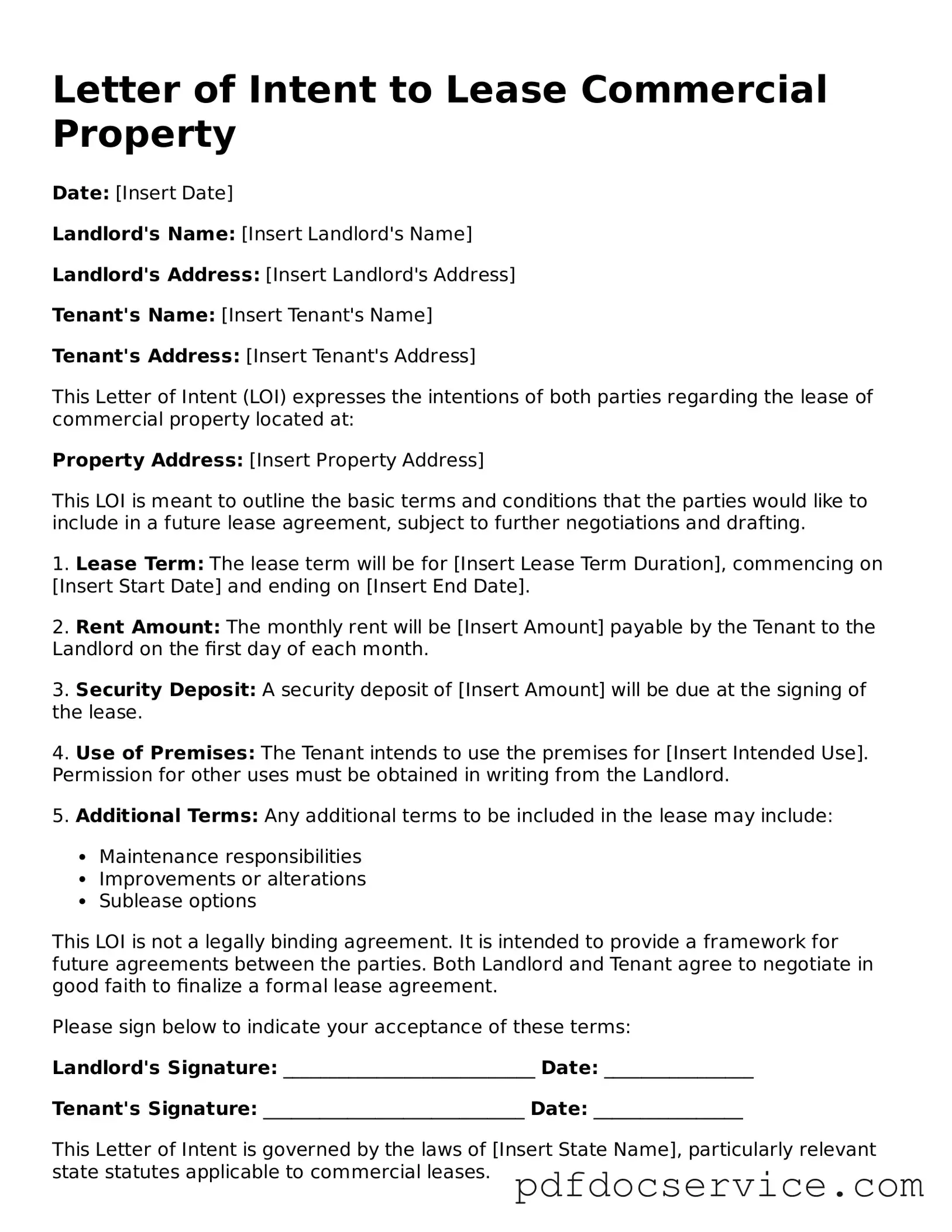Blank Letter of Intent to Lease Commercial Property Form
The Letter of Intent to Lease Commercial Property is a preliminary document that outlines the basic terms and conditions under which a tenant intends to lease a commercial space. This form serves as a starting point for negotiations between the landlord and tenant, helping to clarify intentions before a formal lease agreement is drafted. Understanding this document is crucial for both parties to ensure a smooth leasing process.
Open Letter of Intent to Lease Commercial Property Editor
